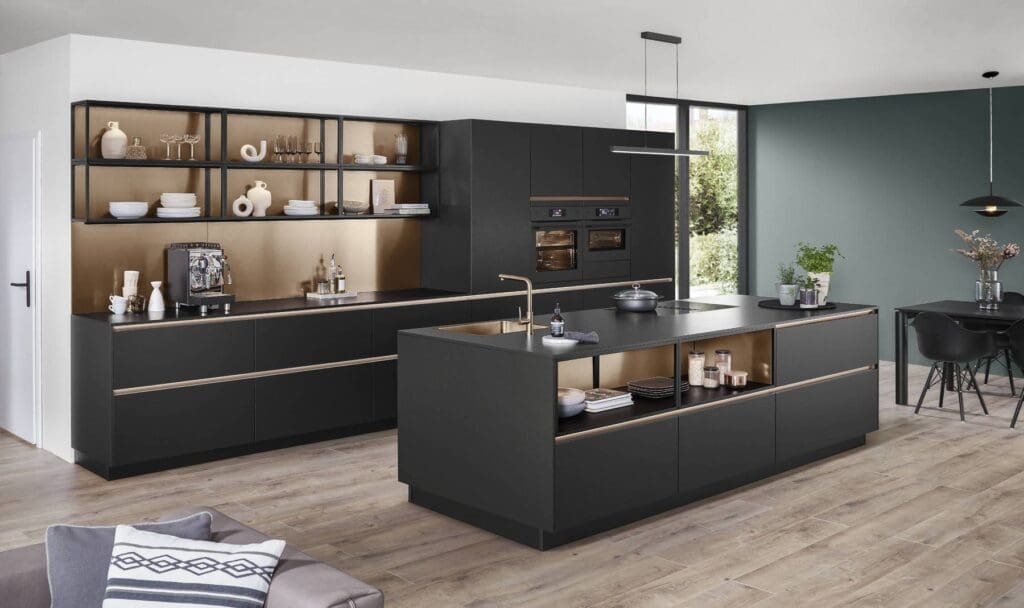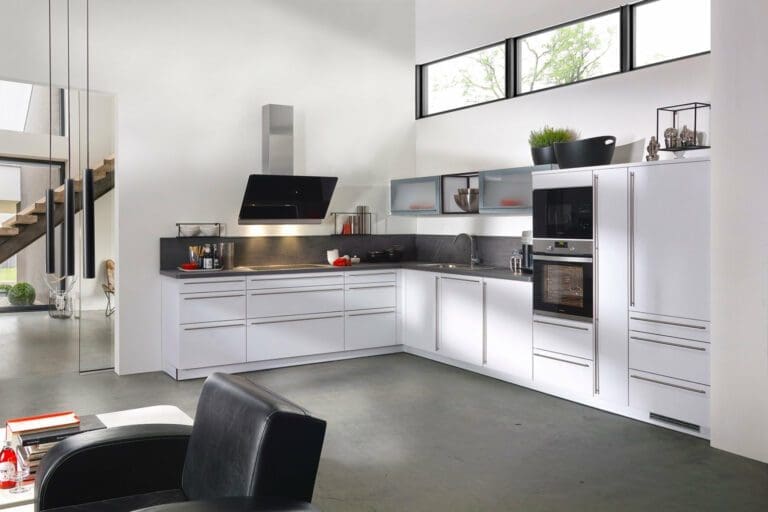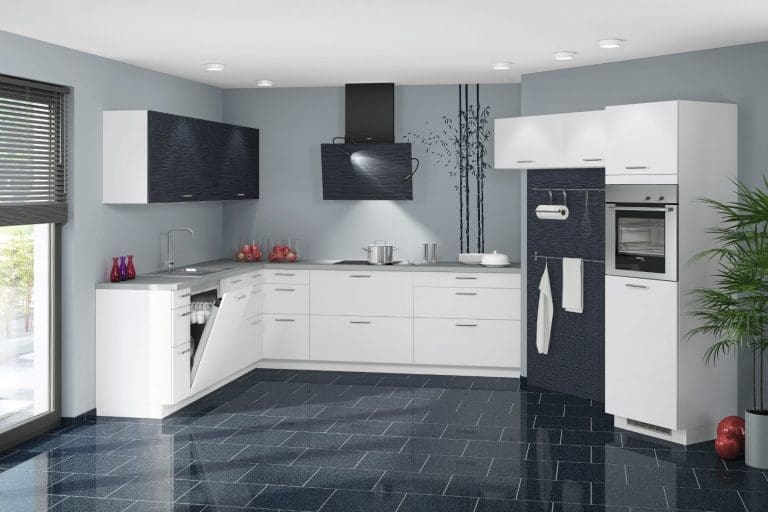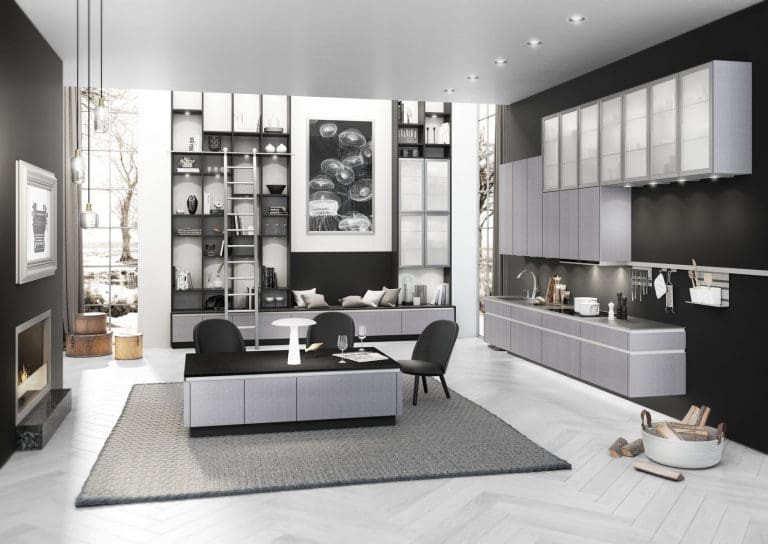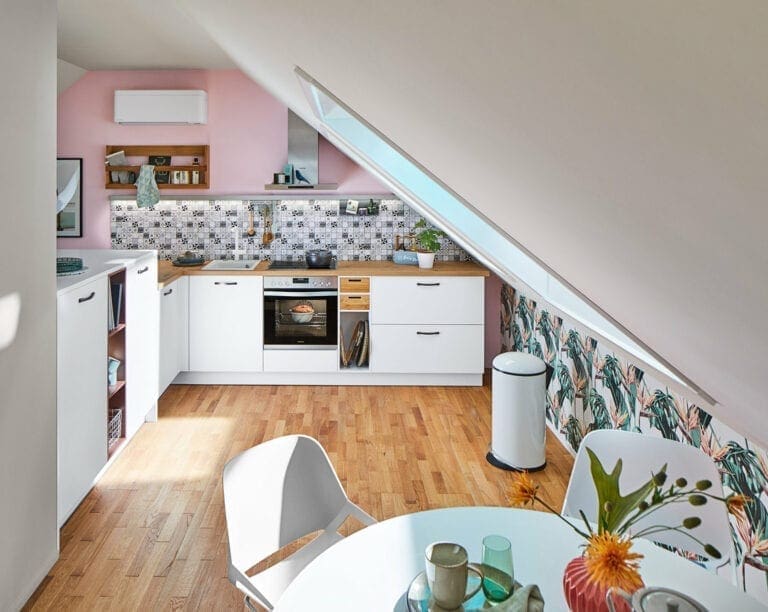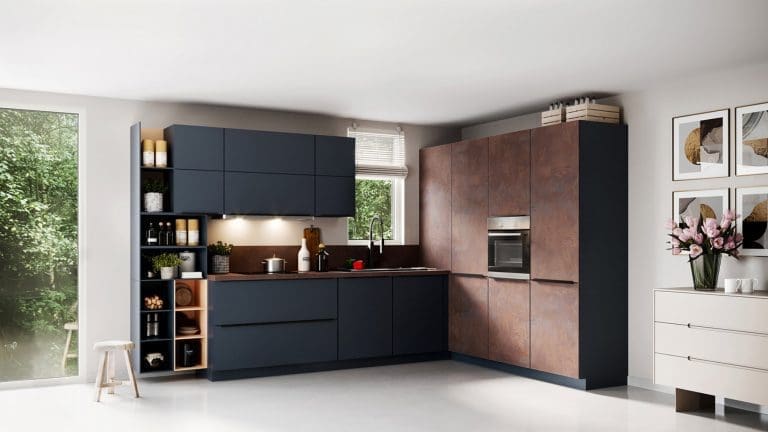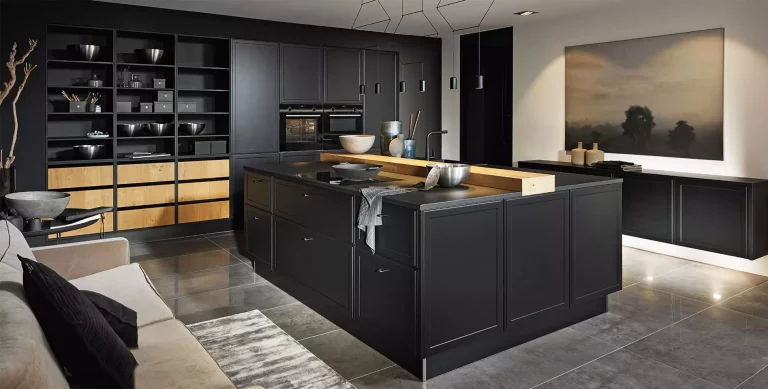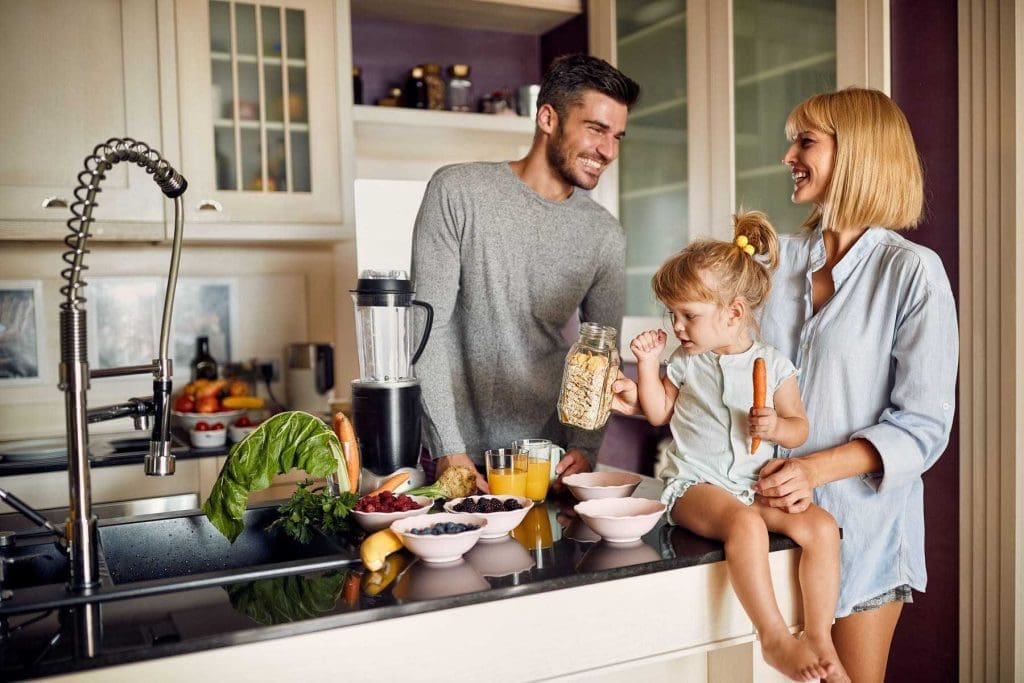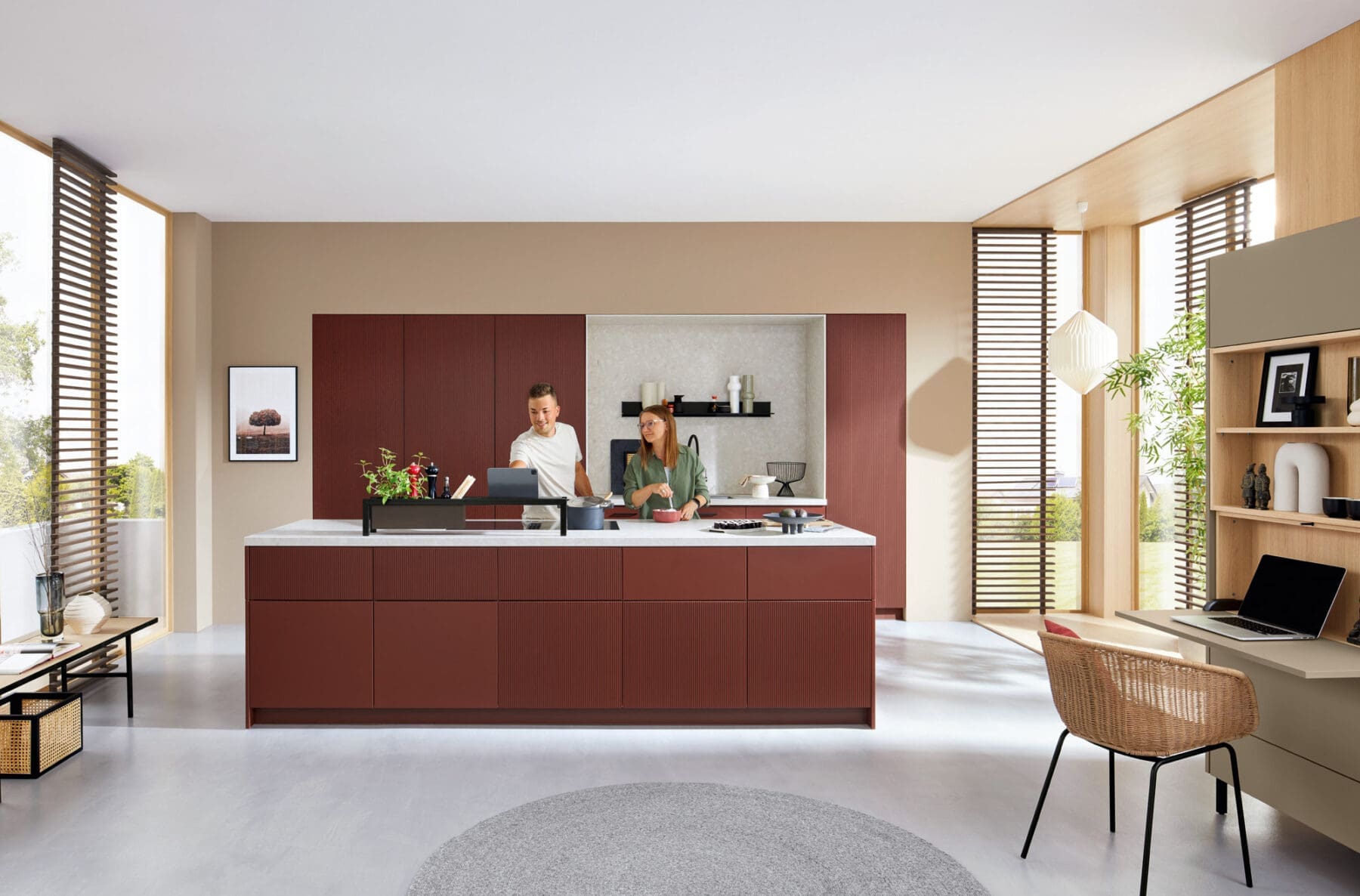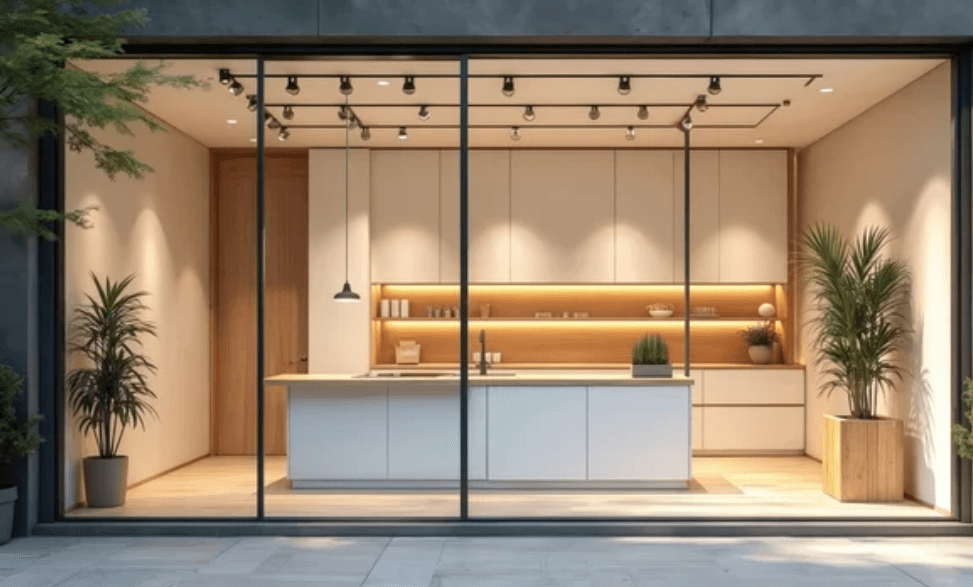The Psychology of Kitchen Design: How Colour, Layout and Lighting Affect Mood
When you’re planning a new kitchen, decisions often revolve around aesthetics and functionality. Yet the emotional impact of your choices—the psychology behind them—is just as important. The kitchen colours you choose, the layout you select, and the lighting you install all influence how you will feel in the space, how others behave, and even how productive or relaxed you are. In short, design decisions are key in shaping mood.
Any skilled and experienced kitchen designer understands how each separate element within your design can affect your mindset and daily routine. Whether you’re hosting friends or making your morning coffee, your environment influences the experience more than you might think.
In this guide, we’ll explore how kitchen colour, layout, and lighting impact emotional wellbeing and how to make confident, informed decisions that lead to a kitchen you’ll enjoy spending time in for many long years ahead.
How Colour Affects Mood in the Kitchen
Colour is one of the most powerful psychological tools in design, subtly guiding emotional responses and influencing how we feel, behave, and interact within a space. In the kitchen—where daily routines unfold and multiple family activities take place—the impact of colour is especially noticeable.
Whether you’re starting your day with a quiet coffee or preparing dinner while chatting with family or friends, the colours that surround you set the emotional tone of your experiences. Certain colours can lift your energy and encourage conversation, while others promote calm and clarity. Understanding the psychological effects of different colour palettes can help you make more conscious choices that support the mood you want to create.
Below, we explore how different colour directions—from warm and inviting to cool and calming—can shape the feel of your kitchen, with suggestions for brands that offer stylish options in each category.
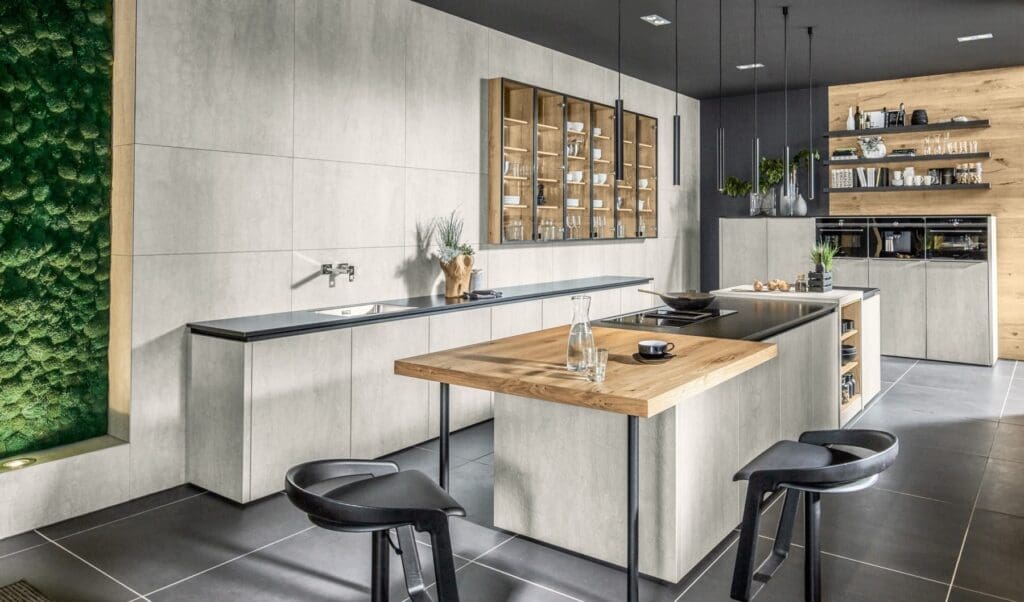

Warm Kitchen Tones: Energising and Social
Shades like terracotta, deep mustard, and warm taupe are naturally inviting. They stimulate appetite and conversation, making them excellent for kitchens where entertaining plays a key role. Popular kitchen brands like Bauformat and Rotpunkt offer beautiful kitchen cabinetry in warm, muted tones with tactile finishes. These add richness without becoming overwhelming, and especially when combined with neutral kitchen worktops and wooden accents.
Cool Kitchen Colours: Calming and Clean
Dark navy, charcoal, or even black kitchens have been much in demand over the past decade. While once considered risky or challenging to integrate, these colours can evoke a sense of control and refinement. They work well in larger spaces with plenty of light and balanced by natural materials or metallic accents. Next125 and Brigitte are examples of German kitchen brands, both of which offer luxurious deep hues with advanced surface technologies that resist fingerprints, making darker colours more practical for everyday use.
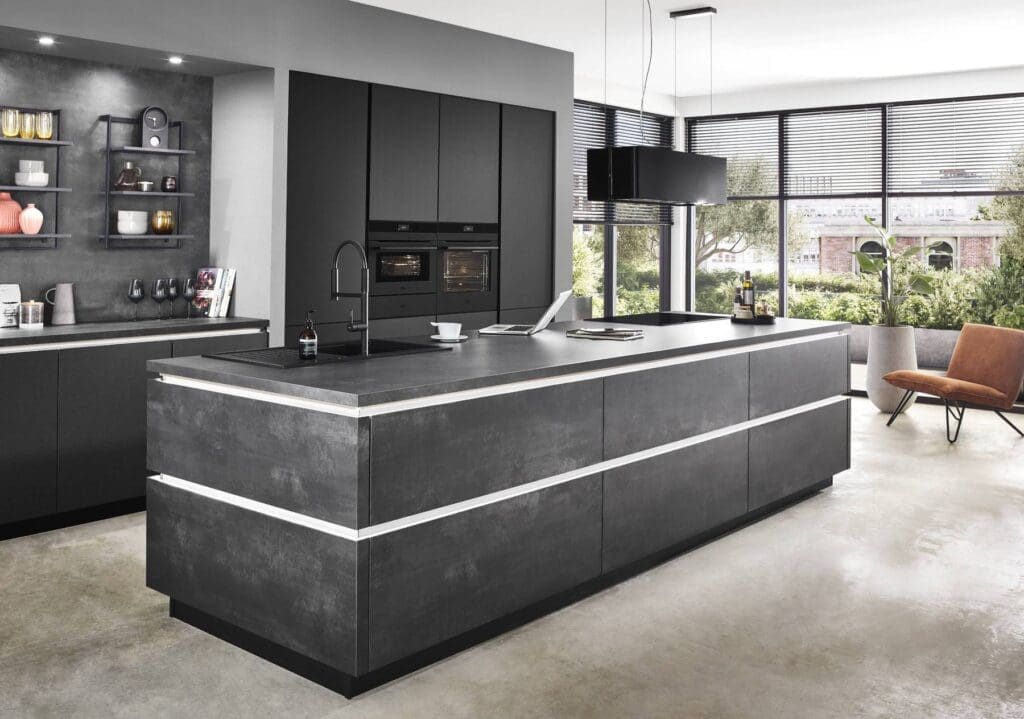
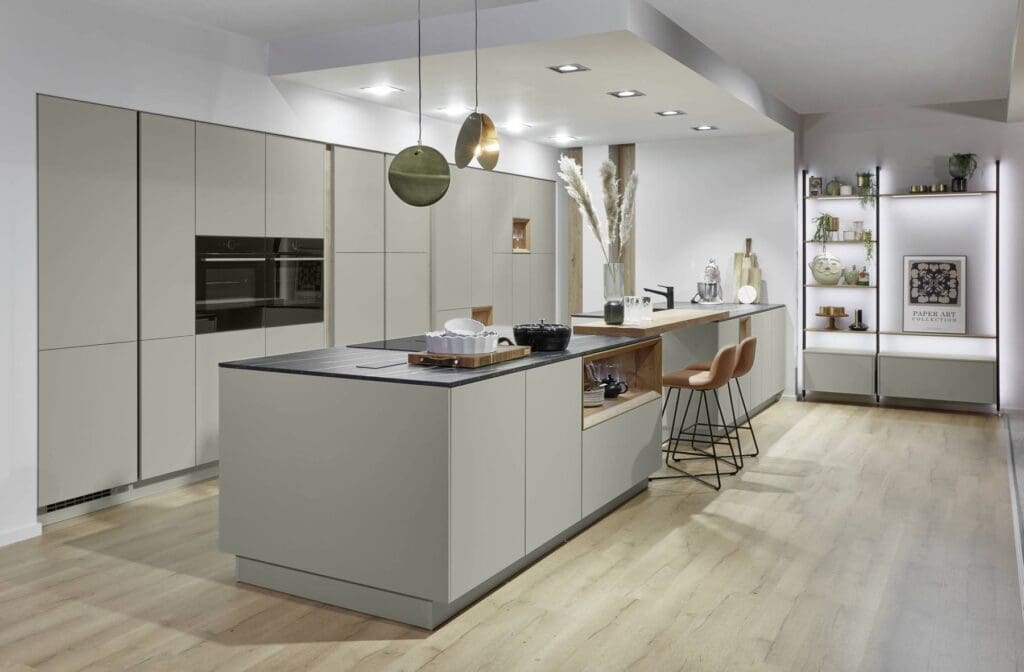
Neutrals Kitchen Tones: Flexible and Timeless
Neutral kitchen shades such as cream, stone, and soft beige don’t just play it safe—they provide flexibility. These tones work well in layered schemes, allowing you to adapt accessories and accents over time without having to redo the core kitchen. Kitchen brands such as Pronorm and Bauformat offer elegant neutral kitchen ranges that maintain their appeal long after fleeting kitchen trends come and go.
The Impact of Kitchen Layout on Your Emotional Flow
Beyond colour, the layout of your kitchen has a direct effect on how you feel and interact with the space. A well-considered layout reduces stress, improves efficiency, and encourages positive behaviour—especially in busy family kitchens…
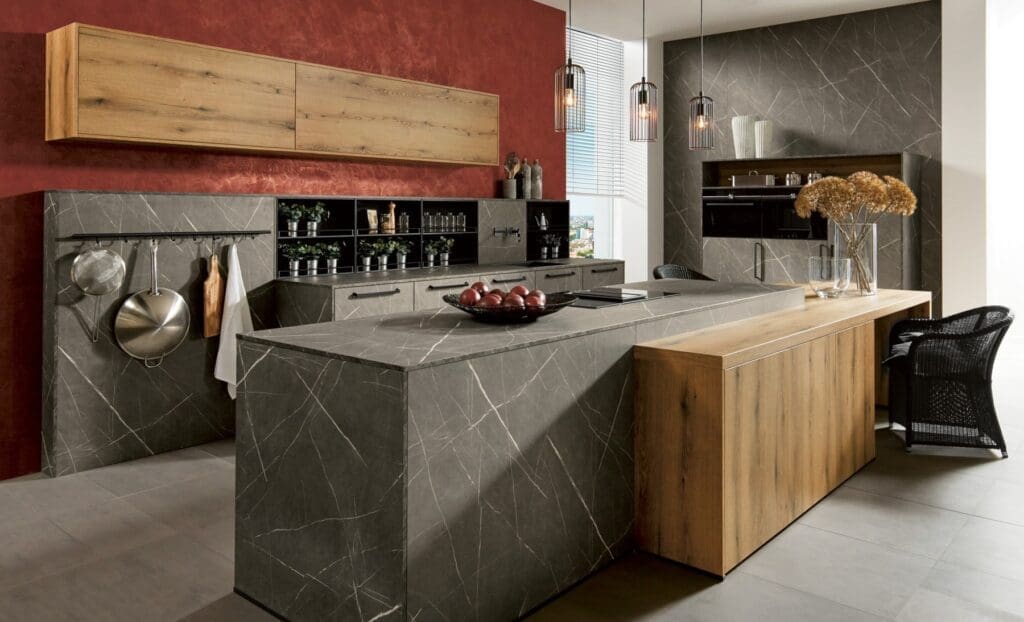
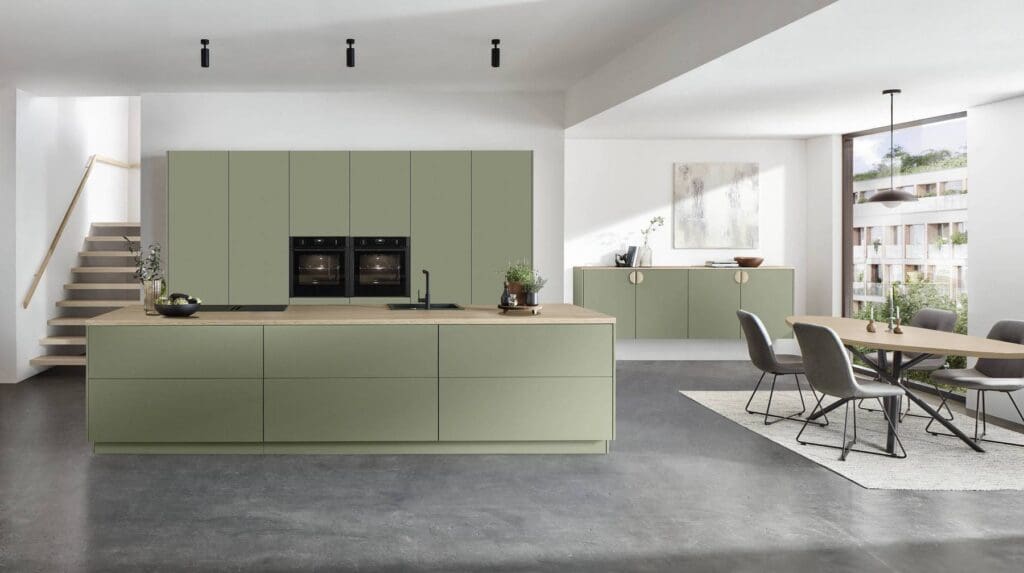
Open Plan Kitchens: Social and Inclusive
Open kitchen layouts are more than a design trend. They remove physical and emotional barriers, allowing easier interaction between those cooking and others in the room. For sociable households, this layout fosters togetherness and reduces the feeling of isolation when preparing food. However, open plan spaces require thoughtful zoning. It’s important to clearly define separate areas for cooking, eating, and relaxing through clever use of islands, flooring changes, or lighting. Pronorm kitchens are well suited to open layouts with their seamless cabinetry and cohesive materials that work across different zones.
Galley and U-Shaped Layouts: Focused and Functional
Galley or U-shaped kitchens create a cocoon-like feeling, which can be particularly comforting. These kitchen layouts reduce distractions and allow for more concentrated cooking activity, making them ideal for passionate home chefs. These kitchen layouts benefit from symmetry and flow. Storage should be smartly integrated, and movement between sink, hob, and fridge—known traditionally as the “working triangle”—should be effortless. Brands such as Rotpunkt and Brigitte offer handleless and modular kitchen systems that enhance the feeling of balance and control.
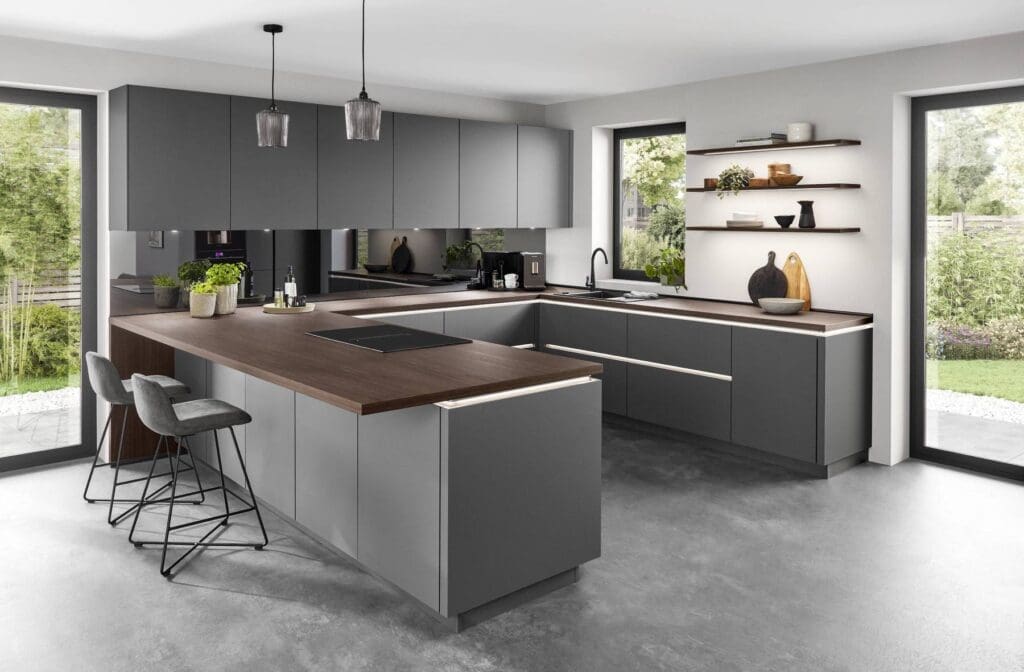
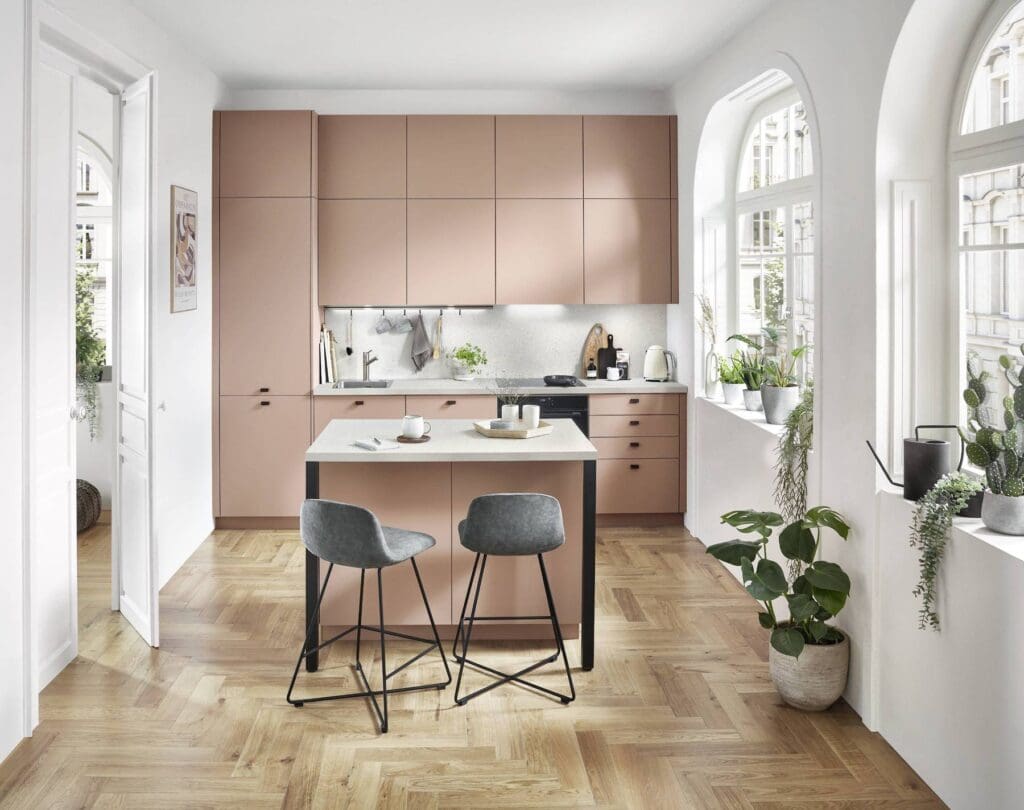
Kitchen Island Layouts: Dynamic and Engaging
Kitchen islands are more than storage or food prep stations—they’re hubs of interaction. Whether it’s children doing homework or guests enjoying a drink while you cook, kitchen islands draw people in and create a focal point that invites conversation. Next125 and Bauformat offer stunning kitchen island units in contrasting materials, helping you anchor the room while adding visual interest. If you opt for a kitchen island, ensure there’s enough clearance to walk around freely—at least 1 metre is ideal for good and accessible flow.
Kitchen Lighting and Its Psychological Influence
Lighting may not always seem like a primary consideration when planning your new kitchen, but it plays a major role in shaping how you feel in your kitchen. From boosting alertness to creating a sense of calm, the right lighting can influence both your mood and how well the space functions. Natural light, in particular, helps regulate your body’s rhythm and lifts your mood—so it’s worth maximising it through well-placed windows, roof lights, or bi-fold doors. Reflective surfaces such as mirrors or gloss tiles can help bounce natural light around the room, making smaller kitchens feel more open, although it’s important to balance these with softer textures to avoid a clinical feel.
Task lighting is essential in key areas like the hob, sink, and prep zones, ensuring visibility and reducing eye strain. Under-cabinet LEDs or directional lights work well, and most kitchen brands offer integrated solutions that keep designs sleek and functional. To complete the lighting scheme, add ambient and accent lighting—such as pendant lights or dimmable spotlights—to create a warm, layered effect that can transition from bright and energising during the day to relaxed and atmospheric in the evening. A mix of light sources at different levels helps create depth, comfort, and flexibility.
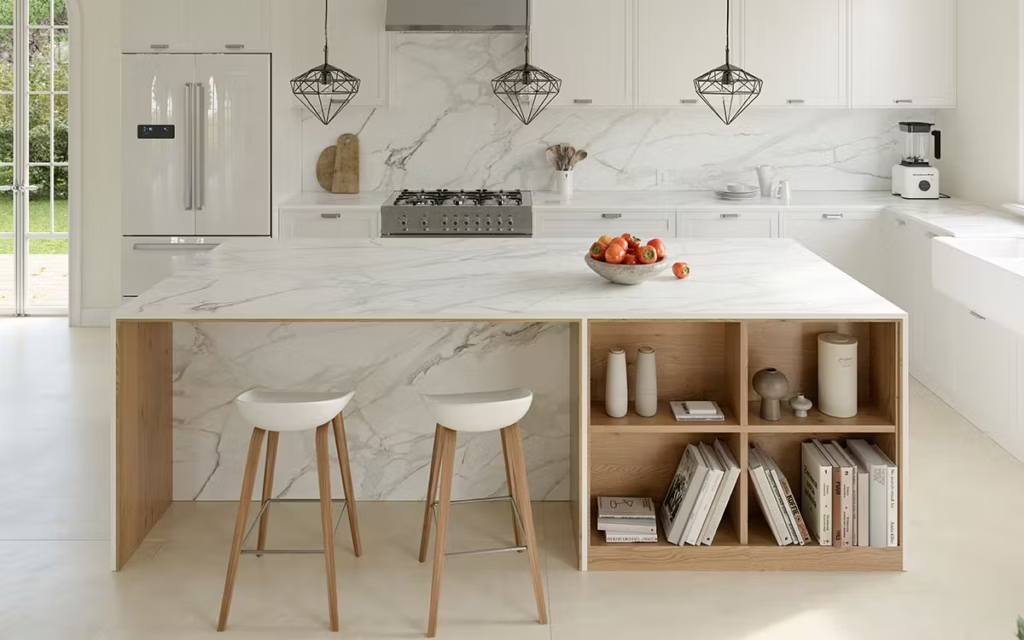
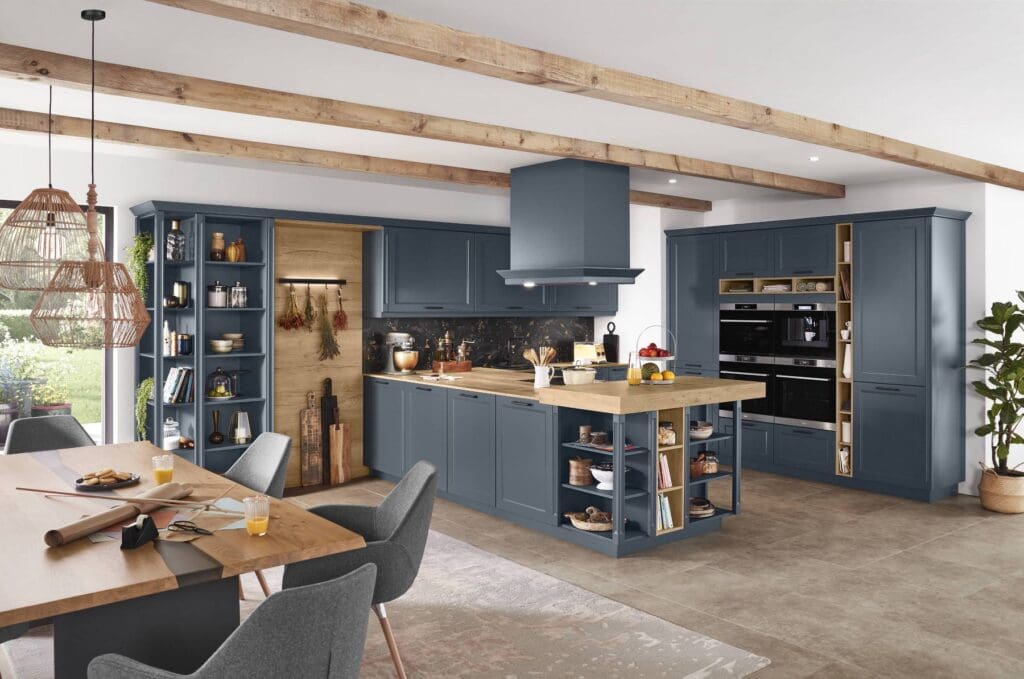
Kitchen Materials and Finishes: Tactile Psychology
It’s not just colour and layout that affect mood. Touch is another sense worth considering. Materials such as soft-touch matt finishes, woodgrain textures, and smooth stone surfaces all provoke different emotional responses. Brands such as Nobilia, Pronorm and Rotpunkt offer anti-fingerprint matt finishes that feel soft and luxurious underhand. These surfaces bring calm to the kitchen and can help reduce visual noise, particularly in minimalist kitche schemes.
Alternatively, wood accents from Bauformat or Brigitte lend warmth and comfort, creating a welcoming tone. Even a single wood element—such as open shelving or a breakfast bar—can help soften a cooler colour palette.
Final Thoughts: Designing a Kitchen That Feels Right
Psychological design isn’t about following rules—it’s about understanding how space affects behaviour and emotions. When you plan a kitchen that suits how you live and feel, it becomes more than just a place to prepare food.
Think about what atmosphere you want to create. Is your kitchen a place for calm reflection, lively gatherings, or something in between? Let that be your starting point, and make choices with intention—from cabinet colour to lighting layers.
If you’re feeling unsure, visiting your local kitchen showroom and meeting with experienced designers is an invaluable step. Seeing finishes in real life and speaking to design experts helps clarify what works for your space and lifestyle, whilst introducing you to a wide range of styles, colours, and textures that support your aesthetic goals, but also your emotional ones too.

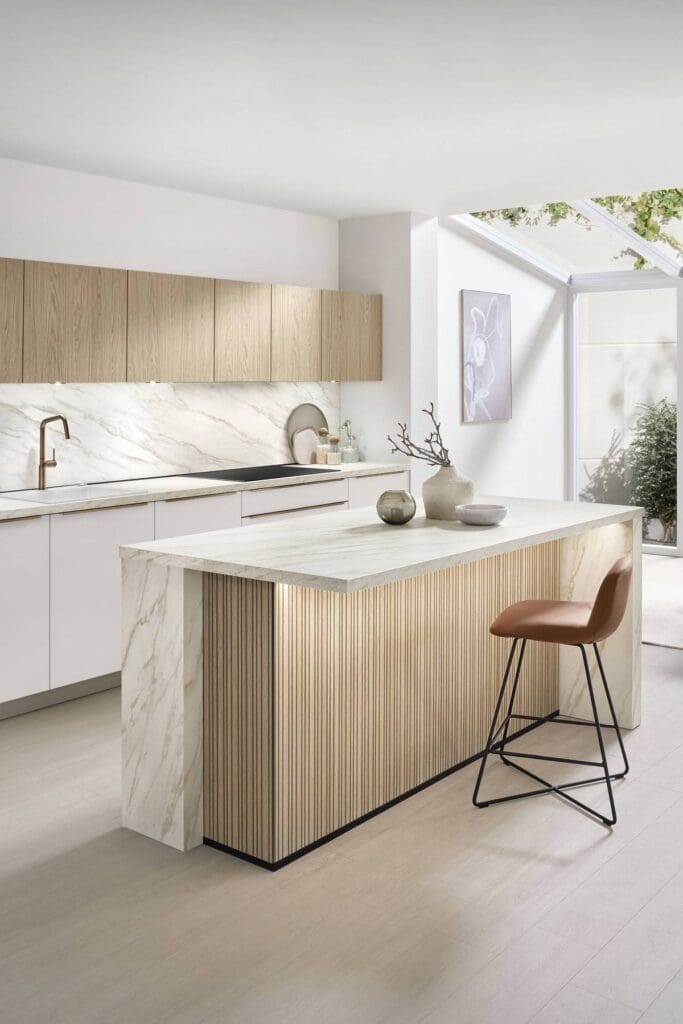
FAQs: Kitchen Psychology Explained
Which kitchen colours are best for a small space?
Light greys, soft whites, and pale greens help open up a smaller kitchen. Choose matt or satin finishes to avoid glare, and add warmth with natural wood or brass details.
- How can I make my kitchen feel more relaxing?
Opt for soft tones like sage or clay, avoid too much gloss, and choose layered lighting with warm bulbs. Keep layout simple and clutter minimal.
- What layout is best for a busy family kitchen?
Open plan with a kitchen island works well for families, encouraging interaction while still keeping cooking zones functional. Ensure there’s ample storage to keep surfaces clear.
- Does lighting really affect mood in the kitchen?
Yes, especially the difference between warm and cool tones. Warm light is cosy and relaxing; cool white light is better for focus and daytime tasks.
- What kitchen brands offer calming colours and finishes?
Look to Nobilia, Pronorm, and Rotpunkt for muted colour ranges and tactile finishes that promote a calm, balanced atmosphere.
Ready to create a kitchen that truly supports your lifestyle and mood? Download our brochure or visit your local kitchen showroom and experience the difference thoughtful design can make.
Download a Brochure
